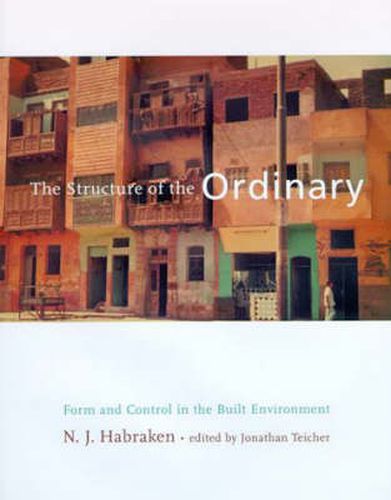Readings Newsletter
Become a Readings Member to make your shopping experience even easier.
Sign in or sign up for free!
You’re not far away from qualifying for FREE standard shipping within Australia
You’ve qualified for FREE standard shipping within Australia
The cart is loading…






According to N. J. Habraken, intimate and unceasing interaction between people and the forms they inhabit uniquely defines built environment. The Structure of the Ordinary, the culmination of decades of environmental observation and design research, is a recognition and analysis of everyday environment as the wellspring of urban design and formal architecture. The authors central argument is that built environment is universally organized by the Orders of Form, Place, and Understanding. These three fundamental, interwoven principles correspond roughly to physical, biological, and social domains.Historically, ordinary environment was the background against which architects built the extraordinary. Drawing upon extensive examples from archaeological and contemporary sites worldwide, the author illustrates profound recent shifts in the structure of everyday environment. One effect of these transformations, Habraken argues, has been the loss of implicit common understanding that previously enabled architects to formally enhance and innovate while still maintaining environmental coherence. Consequently, architects must now undertake a study of the ordinary as the fertile common ground in which form- and place-making are rooted. In focusing on built environment as an autonomous entity distinct from the societies and natural environments that jointly create it, this book lays the foundation for a new dialogue on methodology and pedagogy, in support of a more informed approach to professional intervention.
$9.00 standard shipping within Australia
FREE standard shipping within Australia for orders over $100.00
Express & International shipping calculated at checkout
According to N. J. Habraken, intimate and unceasing interaction between people and the forms they inhabit uniquely defines built environment. The Structure of the Ordinary, the culmination of decades of environmental observation and design research, is a recognition and analysis of everyday environment as the wellspring of urban design and formal architecture. The authors central argument is that built environment is universally organized by the Orders of Form, Place, and Understanding. These three fundamental, interwoven principles correspond roughly to physical, biological, and social domains.Historically, ordinary environment was the background against which architects built the extraordinary. Drawing upon extensive examples from archaeological and contemporary sites worldwide, the author illustrates profound recent shifts in the structure of everyday environment. One effect of these transformations, Habraken argues, has been the loss of implicit common understanding that previously enabled architects to formally enhance and innovate while still maintaining environmental coherence. Consequently, architects must now undertake a study of the ordinary as the fertile common ground in which form- and place-making are rooted. In focusing on built environment as an autonomous entity distinct from the societies and natural environments that jointly create it, this book lays the foundation for a new dialogue on methodology and pedagogy, in support of a more informed approach to professional intervention.